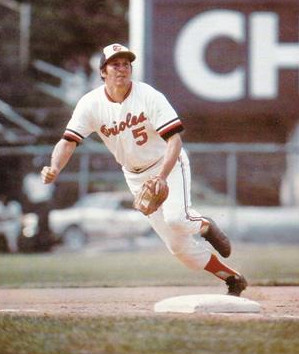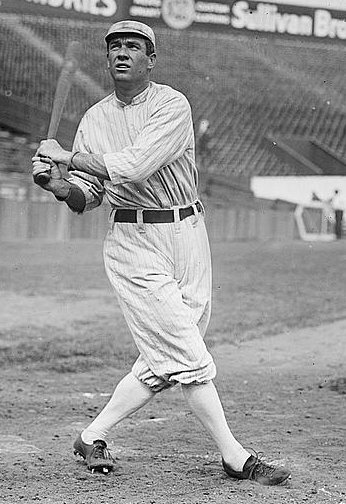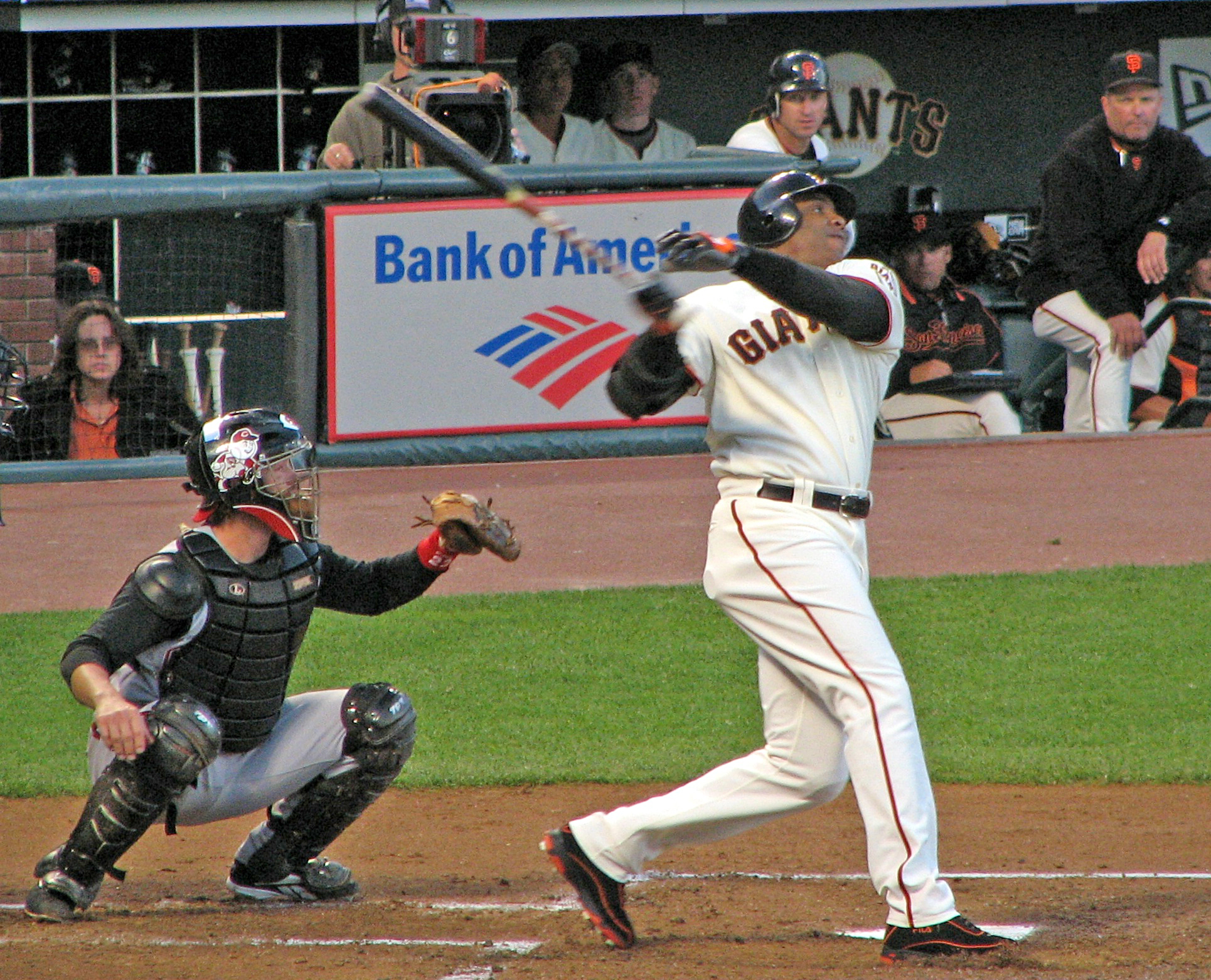|
Harry Gleason
Harry Gilbert Gleason (March 28, 1875 – October 21, 1961) was a utility infielder/outfielder in Major League Baseball who played from 1901 through 1905 for the Boston Americans (1901–03) and St. Louis Browns (1904–05). Listed at 5' 6", 160 lb., Gleason batted and threw right-handed. He was born in Camden, New Jersey. His older brother, Kid Gleason, also was a major league player. A line-drive hitter, Gleason delivered a pinch-hit single and stole a base in his first major league at-bat with the Boston Americans. After that, he made 262 fielding appearances as a third baseman (202), shortstop (20) and second baseman (16), as well at center field (16) and left (8). His most productive season came with the 1905 St. Louis Browns, when he played a career-high 150 games including 144 as the team's regular third base, while hitting 17 extrabases with 45 runs and 57 RBI, also career-numbers. In a five-season career, Gleason was a .218 hitter (206-for-944) with three home ... [...More Info...] [...Related Items...] OR: [Wikipedia] [Google] [Baidu] |
Third Baseman
A third baseman, abbreviated 3B, is the player in baseball or softball whose responsibility is to defend the area nearest to third base — the third of four bases a baserunner must touch in succession to score a run. In the Baseball scorekeeping, scoring system used to record defensive plays, the third baseman is assigned the number 5. Third base is known as the "hot corner", because the third baseman is often the infielder who stands closest to the batter—roughly 90–120 feet away, but even closer if a Bunt (baseball), bunt is expected. Most right-handed hitters tend to hit the ball hard in this direction. A third baseman must possess good hand-eye coordination and quick reactions to catch batted balls whose speed can exceed . The third base position requires a strong and accurate arm, as the third baseman often makes long throws to first base or quick ones to second baseman, second base to start a double play. As with middle infielders, right-handed throwing players are ... [...More Info...] [...Related Items...] OR: [Wikipedia] [Google] [Baidu] |
At-bat
In baseball, an at bat (AB) or time at bat is a batter's turn batting against a pitcher. An at bat is different from a plate appearance. A batter is credited with a plate appearance regardless of what happens upon completion of his turn at bat, but a batter is charged with an at bat only if that plate appearance does not have one of the results enumerated below. While at bats are used to calculate certain statistics, including batting average and slugging percentage, players can qualify for the season-ending rankings in these categories only if they accumulate 502 plate appearances during the season. Batters will not be charged an at bat if their plate appearances end under the following circumstances: * Receiving a base on balls (BB).In 1887, Major League Baseball counted bases on balls as hits (and thus as at-bats). The result was high batting averages, including some near .500, and the experiment was abandoned the following season. * Being hit by a pitch (HBP). * Hitting a s ... [...More Info...] [...Related Items...] OR: [Wikipedia] [Google] [Baidu] |
1961 Deaths
Events January * January 1 – Monetary reform in the Soviet Union, 1961, Monetary reform in the Soviet Union. * January 3 ** United States President Dwight D. Eisenhower announces that the United States has severed diplomatic and consular relations with Cuba (Cuba–United States relations are restored in 2015). ** Aero Flight 311 (Koivulahti air disaster): Douglas DC-3C OH-LCC of Finnish airline Finnair, Aero crashes near Kvevlax (Koivulahti), on approach to Vaasa Airport in Finland, killing all 25 on board, due to pilot error: an investigation finds that the Captain (civil aviation), captain and First officer (civil aviation), first officer were both exhausted for lack of sleep, and had consumed excessive amounts of alcohol at the time of the crash. It remains the deadliest air disaster to occur in the country. * January 5 ** Italian sculptor Alfredo Fioravanti enters the U.S. Consulate in Rome, and confesses that he was part of the team that forged the Etruscan terra ... [...More Info...] [...Related Items...] OR: [Wikipedia] [Google] [Baidu] |
1875 Births
Events January * January 1 – The Midland Railway of England abolishes the Second Class passenger category, leaving First Class and Third Class. Other British railway companies follow Midland's lead during the rest of the year (Third Class is renamed Second Class in 1956). * January 5 – The Palais Garnier, one of the most famous opera houses in the world, is inaugurated as the home of the Paris Opera. * January 12 – Guangxu Emperor, Guangxu becomes the 11th Qing dynasty Emperor of China at the age of 3. He succeeds his cousin, the Tongzhi Emperor, who had no sons of his own. * January 14 – The newly proclaimed King Alfonso XII of Spain (Queen Isabella II's son) arrives in Spain to restore the monarchy during the Third Carlist War. * January 24 – Camille Saint-Saëns' orchestral ''Danse macabre (Saint-Saëns), Danse macabre'' receives its première. February * February 3 – Third Carlist War: Battle of Lácar – Carlist commander Torcuat ... [...More Info...] [...Related Items...] OR: [Wikipedia] [Google] [Baidu] |
Triple (baseball)
In baseball, a triple is the act of a Batter (baseball), batter safely reaching third base after hitting the ball, with neither the benefit of a fielder's misplay (see error (baseball statistics), error) nor another baserunner, runner being put out on a fielder's choice. A triple is sometimes called a "three-bagger" or "three-base hit". For baseball statistics, statistical and baseball scorekeeping, scorekeeping purposes it is denoted by 3B. Triples have become somewhat rare in Major League Baseball, less common than both the Double (baseball), double and the home run. This is because it requires a ball to be hit solidly to a distant part of the field (ordinarily a line drive or Fly ball (baseball), fly ball near the Foul line (baseball), foul line closest to Right fielder, right field), or the ball to take an irregular bounce in the outfield, usually against the wall, away from a outfielder, fielder. It also requires the batter's team to have a good strategic reason for wanting ... [...More Info...] [...Related Items...] OR: [Wikipedia] [Google] [Baidu] |
Double (baseball)
In baseball, a double is the act of a batter striking the pitched ball and safely reaching second base without being called out by the umpire, without the benefit of a fielder's misplay (see error) or another runner being put out on a fielder's choice. A double is a type of hit (the others being the single, triple and home run) and is sometimes called a "two-bagger" or "two-base hit". For statistical and scorekeeping purposes it is denoted by 2B. Description Typically, a double is a well-hit ball into the outfield that finds the "gap" between the center fielder and one of the corner outfielders, bounces off the outfield wall and down into the field of play, or is hit up one of the two foul lines. To hit many doubles, a batter must have decent hitting skill and power; it also helps to run well enough to beat an outfield throw. Many of the best double hitting batters were revered for high baseball IQ and the ability to slide well and turn a single into an extra-base h ... [...More Info...] [...Related Items...] OR: [Wikipedia] [Google] [Baidu] |
Home Run
In baseball, a home run (abbreviated HR) is scored when the Baseball (ball), ball is hit in such a way that the batting (baseball), batter is able to circle the bases and reach home plate safe (baseball), safely in one play without any error (baseball), errors being committed by the Defense (sports), defensive team. A home run is usually achieved by hitting the ball over the outfield fence between the foul poles (or hitting either foul pole) without the ball touching the Baseball field, field. Inside-the-park home runs where the batter reaches home safely while the baseball is in play on the field are infrequent. In very rare cases, a fielder attempting to catch a ball in flight may misplay it and knock it over the outfield fence, resulting in a home run. An official scorer will credit the batter with a hit (baseball), hit, a Run (baseball), run scored, and a run batted in (RBI), as well as an RBI for each Base running, runner on base. The pitcher is recorded as having given u ... [...More Info...] [...Related Items...] OR: [Wikipedia] [Google] [Baidu] |
Run Batted In
A run batted in or runs batted in (RBI) is a statistic in baseball and softball that credits a batter for making a play that allows a run to be scored (except in certain situations such as when an error is made on the play). For example, if the batter bats a base hit which allows a teammate on a higher base to reach home and so score a run, then the batter gets credited with an RBI. Before the 1920 Major League Baseball season, runs batted in were not an official baseball statistic. Nevertheless, the RBI statistic was tabulated—unofficially—from 1907 through 1919 by baseball writer Ernie Lanigan, according to the Society for American Baseball Research. Common nicknames for an RBI include "ribby" (or "ribbie"), "rib", and "ribeye". The plural of "RBI" is a matter of "(very) minor controversy" for baseball fans:; it is usually "RBIs", in accordance with the usual practice for pluralizing initialisms in English; however, some sources use "RBI" as the plural, on the basis ... [...More Info...] [...Related Items...] OR: [Wikipedia] [Google] [Baidu] |
Run (baseball)
In baseball, a run is scored when a player advances around first, second and third base and returns safely to home plate, touching the bases in that order, before three outs are recorded and all obligations to reach base safely on batted balls are met or assured. A player may score by hitting a home run or by any combination of plays that puts him safely "on base" (that is, on first, second, or third) as a runner and subsequently brings him home. Once a player has scored a run, they may not attempt to score another run until their next turn to bat. The object of the game is for a team to score more runs than its opponent. The Official Baseball Rules hold that if the third out of an inning is a force out of a runner advancing to any base then, even if another baserunner crosses home plate before that force out is made, his run does not count. However, if the third out is not a force out, but a tag out, then if that other baserunner crosses home plate before that tag out i ... [...More Info...] [...Related Items...] OR: [Wikipedia] [Google] [Baidu] |
Extra-base Hit
In baseball, an extra-base hit (EB, EBH or XBH), also known as a long hit, is any hit (baseball), base hit on which the batting (baseball), batter is able to advance past first base without the benefit of a fielder either committing an error (baseball), error or opting to make a throw to retire another baserunning, base runner (see fielder's choice). Extra-base hits are often not listed separately in tables of baseball statistics, but are easily determined by calculating the sum total of a batter's double (baseball), doubles, triple (baseball), triples, and home runs. Extra-base hits are particularly valuable because they ensure that there will be no runners on base that will be Force out, forced to advance on the next fair ball. Another related statistic of interest that can be calculated is "extra bases on long hits". A batter gets three of these for each home run, two for each triple, and one for each double. Thus, leading the league in "Most extra bases in long hits" is a signi ... [...More Info...] [...Related Items...] OR: [Wikipedia] [Google] [Baidu] |
Left Fielder
In baseball, a left fielder, abbreviated LF, is an outfielder who plays defense in left field. Left field is the area of the outfield to the left of a person standing at home plate and facing towards the pitcher's mound. In the numbering system used to record defensive plays, the left fielder is assigned the number seven. Position description Of all outfielders, the left fielder often will have the weakest arm, as he generally does not need to throw the ball as far to prevent the advance of any baserunners. The left fielder still requires good fielding and catching skills, and tends to receive more balls than the right fielder because right-handed hitters tend to "pull" the ball into left field. The left fielder also backs up third baseman, third base on pick-off attempts from the catcher or pitcher and bunts, when possible. Moreover, when a runner is stealing third base, the left fielder must back up the throw from the catcher. Left fielders must also back up third base when ... [...More Info...] [...Related Items...] OR: [Wikipedia] [Google] [Baidu] |
Center Fielder
A center fielder, abbreviated CF, is the outfielder in baseball who plays defense in center field – the baseball and softball fielding position between left field and right field. In the numbering system used to record defensive plays, the center fielder is assigned the number 8. Position description Outfielders must cover large distances, so speed, instincts and quickness to react to the ball are key. They must be able to catch fly balls above their heads and on the run. They must be able to throw the ball accurately over a long distance to be effective. As well as the requirements above, the center fielder must be the outfielder who has the best combination of speed and throwing distance. The center fielder "covers more 'grass' than any other player" (see photo) and, most likely, will catch the most fly balls. The position also has the greatest responsibility among the three outfielders for coordinating their play to prevent collisions when converging on a fly ball, and o ... [...More Info...] [...Related Items...] OR: [Wikipedia] [Google] [Baidu] |







